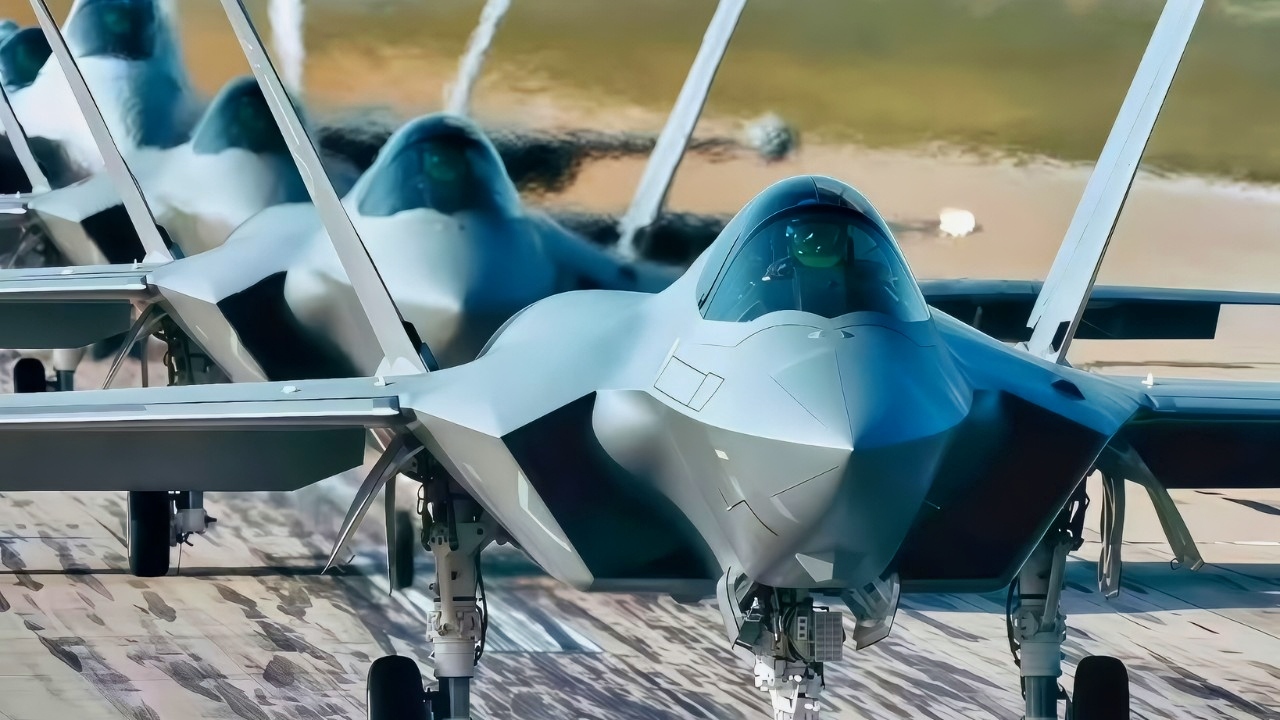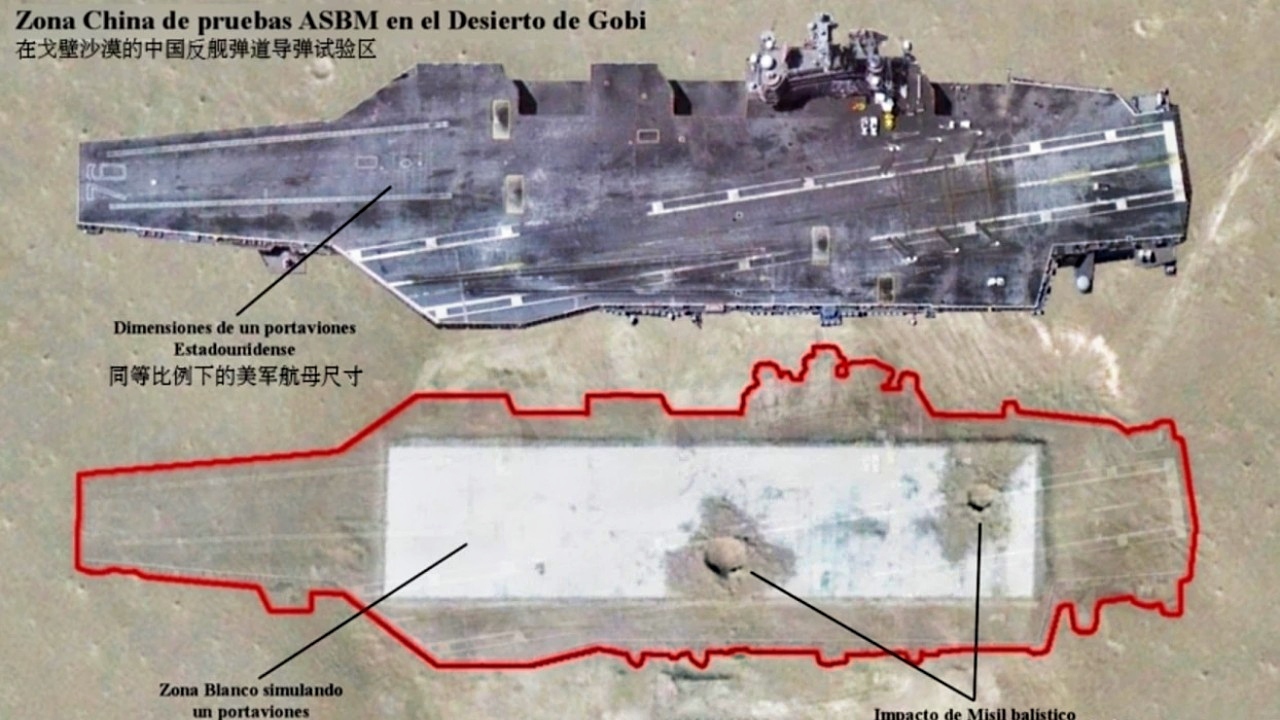Key Points and Summary – The Trump–Xi summit delivered tactical relief—limited tariff cuts, rare-earth pauses, and steps on fentanyl—but left core disputes over Taiwan, tech, and the South China Sea untouched.
-The rivalry endures, yet a major war remains unlikely. Nuclear deterrence, dense interdependence, and a widening web of regional balancers (Japan, India, ASEAN, the EU) constrain escalation.

LANGLEY AIR FORCE BASE, Va. – F-22 Raptors from the 1st Fighter Wing sit in position on the runway fduring the Elephant Walk at Langley Air Force Base, Virginia, Jan. 31, 2025. The surge was designed to showcase the wing’s operational readiness and its ability to rapidly mobilize airpower. The 1st FW operates F-22 Raptors and T-38 Talons, maintaining combat capabilities that enable the U.S. Air Force to execute missions across the globe. With a focus on air superiority, the 1st FW plays a critical role in defending the nation’s interests. (U.S. Air Force photo by Tech Sgt. Matthew Coleman-Foster)
-Still, faster crises, AI, cyber, and precision strike raise miscalculation risks.
-The answer isn’t dominance but managed competition: clearer red lines, restored mil-to-mil links, crisis hotlines, and a modern “concert” of great powers.
-War is a choice; stability demands discipline, steady deterrence, and real crisis-management tools.
Cold War 2.0 or Multipolar Maze? How to Compete Without War
Despite recent easing of tensions following the Trump–Xi summit in Busan in late October, competition between Washington and Beijing will continue to define the international system.
They agreed on a limited package of trade measures that included partial tariff reductions and a temporary lifting of Chinese export controls on rare-earth elements.
It promises on both sides to address the proliferation of fentanyl precursors. But they put off addressing more complex strategic issues such as Taiwan, the military buildup in the South China Sea, and restrictions on advanced technology.
In that sense, the meeting was tactical, not strategic. Competition between Washington and Beijing may have abated somewhat, but it has not ended.
That being the case, the question is not whether the two powers will continue to compete, but whether competition will continue to increase, leading to war.

F-16 Fighting Falcons from the 35th and 80th Fighter Squadrons of the 8th Fighter Wing, Kunsan Air Base, Republic of Korea; the 421st Expeditionary Fighter Squadron of the 388th FW at Hill Air Force Base, Utah; the 55th EFS from the 20th FW at Shaw Air Force Base, S.C.; and from the 38th Fighter Group of the ROK Air Force, demonstrate an “Elephant Walk” as they taxi down a runway, during an exercise at Kunsan Air Base, Republic of Korea, March 2, 2012. The exercise showcased Kunsan Air Base aircrews’ capability to quickly and safely prepare an aircraft for a wartime mission. Image Credit: Creative Commons.
A Force-Field of Possibility
Happily, the short answer to that question is No. Whether we view today’s competition in Cold War 2.0 terms or as an age of multipolar great-power competition, the structural factors that have long worked against direct major-power war still apply.
If this were a rebooted Cold War, remember that even U.S.–Soviet nuclear-armed rivalry stopped short of full-scale conflict in the past—and that structural brake on escalation remains today. If we are in an era of multipolar great-power competition instead, the old dynamics of balance of power – and even possible future institutional guardrails like the 19th-century Concert of Europe – have ways of keeping competition from boiling over into catastrophic major-power war. Rivalry is endemic. Minor wars will flare.
But the risk of a systemic conflict like the Napoleonic Wars or 20th-century World Wars breaking out today is vanishingly small—though not zero.
The Structures That Contain Conflict
Tensions between Washington and Beijing are ebbing for now. A pattern of trade and diplomatic olive branches suggests a desire on both sides to paper over visible cracks for the time being. Underneath those public niceties, however, the older discomforts of great-power competition are intensifying—over technology, supply chains, maritime space, and ideological influence.
This is not the calm before a storm but a test of whether competition can continue without capsizing. The structural context matters. A multi-polar system has more fault-lines but also more breathing-room; a bipolar showdown logic does not automatically apply.
If we see the U.S.–China relationship as Cold War 2.0, the enduring fact of the nuclear age is that weapons of mass destruction are the most powerful brake on escalation. Rational calculation, of course, does not rule out miscalculation and accident, and there are other asymmetric avenues of rivalry to contest short of the top rungs of escalation.
But the risk of any of those strategic flashpoints going nuclear cannot be discounted, and that keeps the top brass on both sides on alert. The logic of mutually assured destruction (MAD) still applies—and the threat of mutually assured fragmentation in a globally interconnected world is also a factor.

J-35 Fighter In Elephant Walk PLAAF Photo.
That does not mean peace is assured, but it does mean total war is profoundly irrational. The lack of direct kinetic conflict to date is not a mere accident of geopolitics; it is a product of deterrence remaining a strategic fact of life.
At the same time, new technologies complicate that deterrence picture: cyber operations, artificial intelligence, and conventional precision-strike systems all change the equation, requiring new crisis-management and communications mechanisms between the great powers.
If instead we accept the premise that the system is truly multipolar, then competition is kept in check not only by nuclear deterrence but a network of alignments, hedging strategies, and institutional arrangements.
The balance of power today is not about dominance but equilibrium and strategic restraint. Regional actors such as India, Japan, ASEAN, and the EU are no longer spectators but active balancers in their own right, influencing the power equation in ways that limit the scope for a direct U.S.–China clash.
The world may be messy and dynamic but that diffusion of power itself makes major war less likely.
Paths to Stability
History teaches us one of the most enduring lessons: states do not just drift into war but take active steps to avoid it when doing so is in their interests.
In the Indo-Pacific, the United States has deepened its alignment with Japan, Australia, and India, these states in turn hedge and diversify, which reduces the risk of a rigid two-player system. These overlapping alignments and counterbalances create a lattice of deterrence that makes escalation harder, not easier. By privileging equilibrium over dominance, great powers can compete robustly without risking mutual annihilation.
Balance, however, may not be enough in a digital-age world where crises can run in days and hours. The missing piece today is a modern institutional architecture for crisis management—a 21st-century “Concert of Powers” capable of containing competition short of turning kinetic.
Regular top-power dialogue, agreed-upon red lines and zones of contestation, and de-escalation procedures can form the basics.
The work is hard, but such a modern concert would not end rivalry but channel it into relatively manageable forms. The restoration of military-to-military communications, the resumption of export-control consultations, and reciprocal commitments on emerging technology suggest faint beginnings of a concert embryonic but urgently needed.
A Choice, Not a Fate
The absence of major-power war is not the absence of danger. Flashpoints like Taiwan and the South China Sea will be sources of volatility.
The risk of miscalculation, nationalist fervor, or accidental escalation still threatens to produce catastrophe. But the incentives for strategic restraint are stronger than the drivers for war. The smarter leaders understand that the contest of this century will be one of endurance, not annihilation.
What lies ahead is not an inexorable march toward conflict, then, but a test of whether the great powers can act with maturity in a competitive age. War between the United States and China is not preordained; it is a choice.
The absence of war does not equal the presence of peace. War is a choice, but peace is a matter of statecraft, prudence, and discipline. Multipolarity is not chaos; it is complexity that must be managed.
Great-power competition is the default condition of international politics, not the overture to a world war. The question is whether we can create the institutions, balances, and norms that allow that competition to play out without destroying the system itself.
About the Author: Dr. Andrew Latham
Andrew Latham is a non-resident fellow at Defense Priorities and a professor of international relations and political theory at Macalester College in Saint Paul, MN. You can follow him on X: @aakatham. He writes a daily column for the National Security Journal.
More Military
Russia’s Submarine Fleet Summed Up Simply in 4 Words
The Air Force Sent A-10 Warthogs to China’s Doorstep
The Air Force’s B-2 Bomber Nightmare Has Arrived
The Navy Tried for 4 Weeks to Sink Their Own Aircraft Carrier











bis-biss
November 4, 2025 at 7:12 pm
In the geopolitical context of the struggle (staredown) in the western Pacific today, choice and inevitably not really much different from each other.
Like grass and hemp.
US governed by mobocracy today, 2-mob democracy from Dems and GOP, all praying for war, in 21st century, today. Dems probably the more dangerous of the two.
Thus china must hope for the light, but needs to prepare for the dark, unless it wants to gnash its teeth.
First, china must get rid of xi. Xi the most corrupt top leader in memory.
Next, leave (exit) the UN.Each year, it has to contribute to UN an amount many or several times its defense budget.
That money should be used to deploy nuke arsenal in space.
Russia does have nuke-powered nukes, but china doesn’t. Thus, space nukes needed to counter US missile defense.
2027 is a dangerous year for china, especially if sam paparo continues to lead pac forces.
Then, it’s 2030, when NATO finally moves over to Pacific after end of ukro conflict, and US has its golden dome up and running.
Then, time for the global mobocracy proponents to go FOR THE JUGULAR !!!
(china’s jugular.)